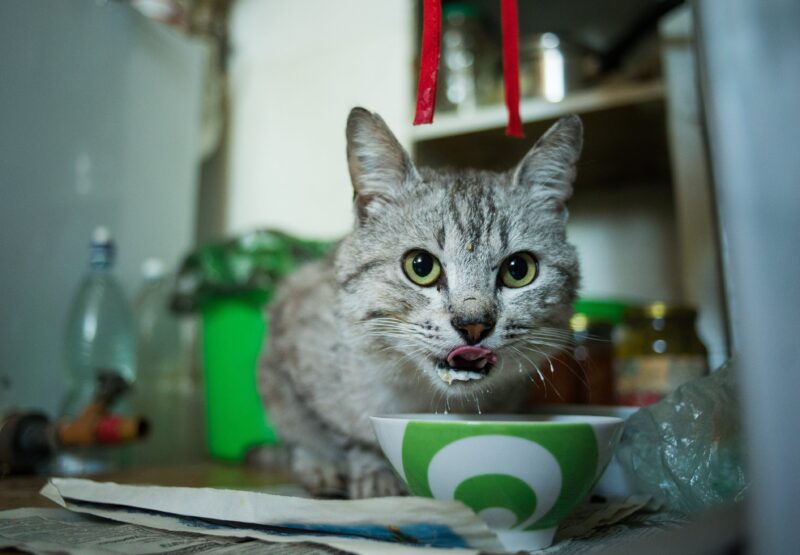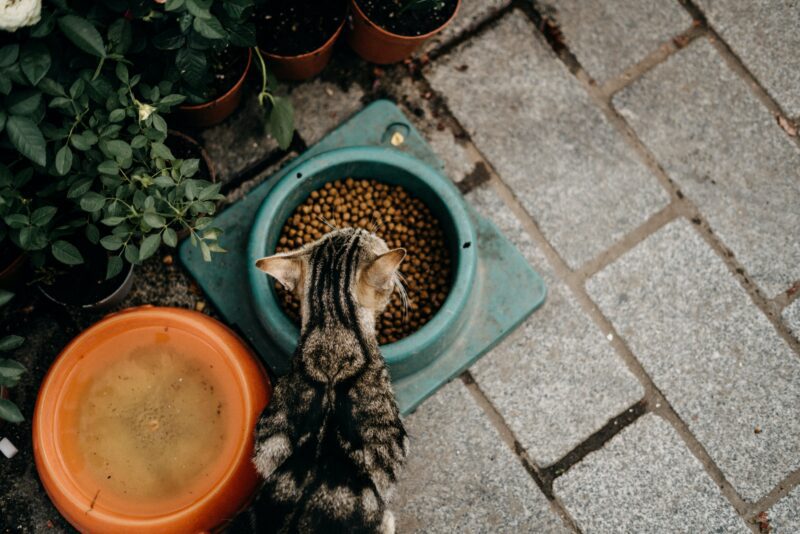As cat owners, providing our feline companions with the best possible nutrition is a key responsibility. The world of cat food can be overwhelming, with countless options lining the shelves. In this comprehensive guide, we’ll delve into the essential nutrients your cat needs, unravel the mysteries of cat food labels, and empower you to make informed decisions about choosing the right cat food for your furry friend.
Section 1: Essential Nutrients for Cat Health
Understanding the nutritional needs of cats is fundamental to selecting the right cat food. Cats are obligate carnivores, meaning their diet must be primarily composed of meat. Here are the key nutrients crucial for your cat’s health:
1.1. Protein:
- Cats require high-quality animal-based proteins for muscle development and overall well-being.
- Look for cat foods with named meat sources like chicken, turkey, or fish.
1.2. Fats:
- Essential fatty acids, such as omega-3 and omega-6, support a cat’s skin and coat health.
- Quality fats are often derived from animal fats and oils like salmon oil.
1.3. Carbohydrates:
- While not a primary energy source for cats, some carbohydrates can provide fiber and aid digestion.
- Opt for cat foods with limited and easily digestible carbohydrate sources.
1.4. Vitamins:
- Cats need a range of vitamins, including A, D, and E, for various bodily functions.
- Cat foods should be fortified with these vitamins to meet nutritional requirements.
1.5. Minerals:
- Essential minerals like calcium, phosphorus, and magnesium are crucial for bone health.
- Balanced mineral content is vital for maintaining a cat’s overall health.
1.6. Taurine:
- Taurine is an amino acid essential for cats, supporting heart health and overall vision.
- Ensure that cat food is fortified with taurine, as cats cannot produce it on their own.
Section 2: Deciphering Cat Food Labels
Reading cat food labels can be a daunting task, but it’s a crucial skill in making informed choices for your cat’s nutrition. Here are key insights to help you decipher cat food labels effectively:

2.1. Understanding Ingredient Lists:
- Ingredients are listed in descending order by weight.
- Look for cat foods with named meat sources as the primary ingredients.
2.2. Identifying Protein Sources:
- Ensure that the main protein source is clearly identified (e.g., chicken, beef, or fish).
- Avoid generic terms like “meat by-products” or “animal derivatives.”
2.3. Avoiding Fillers:
- Minimize the inclusion of unnecessary fillers like corn, wheat, or soy.
- Cats derive the majority of their nutritional needs from animal-based proteins.
2.4. Checking for Artificial Additives:
- Limit the intake of artificial preservatives, colors, and flavors.
- Opt for cat foods with natural preservatives like tocopherols (vitamin E).
2.5. Grain-Free Considerations:
- Some cats may benefit from grain-free diets, especially those with grain sensitivities.
- Grain-free options often focus on high-quality protein and low-carbohydrate content.
2.6. Meal vs. Whole Meat:
- Whole meats (e.g., “chicken” or “beef”) are preferable to meat meals (e.g., “chicken meal” or “beef meal”).
- Meals are concentrated protein sources but should complement whole meats in the ingredient list.
Section 3: Tailoring Cat Food Choices to Life Stages
Cats have varying nutritional needs at different life stages, and choosing cat food tailored to your cat’s age is essential for their well-being.

3.1. Kitten Food:
- Kitten food is formulated for rapid growth and development.
- Look for high protein and fat content to support their energy needs.
3.2. Adult Cat Food:
- Adult cat food should provide balanced nutrition for overall health.
- Focus on maintaining a healthy weight and supporting immune function.
3.3. Senior Cat Food:
- Senior cat food addresses the changing nutritional needs of older cats.
- Consider formulations with joint support and easily digestible proteins.
3.4. Specialized Diets:
- Cats with specific health conditions may benefit from specialized diets.
- Consult your veterinarian for recommendations tailored to your cat’s individual needs.
Section 4: Navigating Cat Food Types
The market offers various cat food types, each with its advantages and considerations. Understanding the distinctions can help you make the right choice for your cat.
4.1. Dry Cat Food:
- Convenient and cost-effective.
- Check for high-quality protein sources and moderate carbohydrate content.
4.2. Wet Cat Food:
- Higher moisture content aids in hydration.
- Choose varieties with named meat sources and minimal fillers.
4.3. Raw Cat Food:
- Mimics a cat’s natural diet.
- Requires careful handling to minimize the risk of bacterial contamination.
4.4. Freeze-Dried or Dehydrated Cat Food:
- Retains nutritional value with convenient storage.
- Rehydrating may be necessary, so monitor your cat’s water intake.
Conclusion:
Decoding cat nutrition and choosing the right cat food may seem complex, but armed with knowledge, you can make choices that positively impact your cat’s health and well-being. Prioritize high-quality protein sources, understand ingredient labels, tailor choices to your cat’s life stage, and consider different cat food types to provide a well-rounded diet. Always consult with your veterinarian to ensure your cat’s unique nutritional needs are met, fostering a lifetime of health and happiness for your feline companion.

